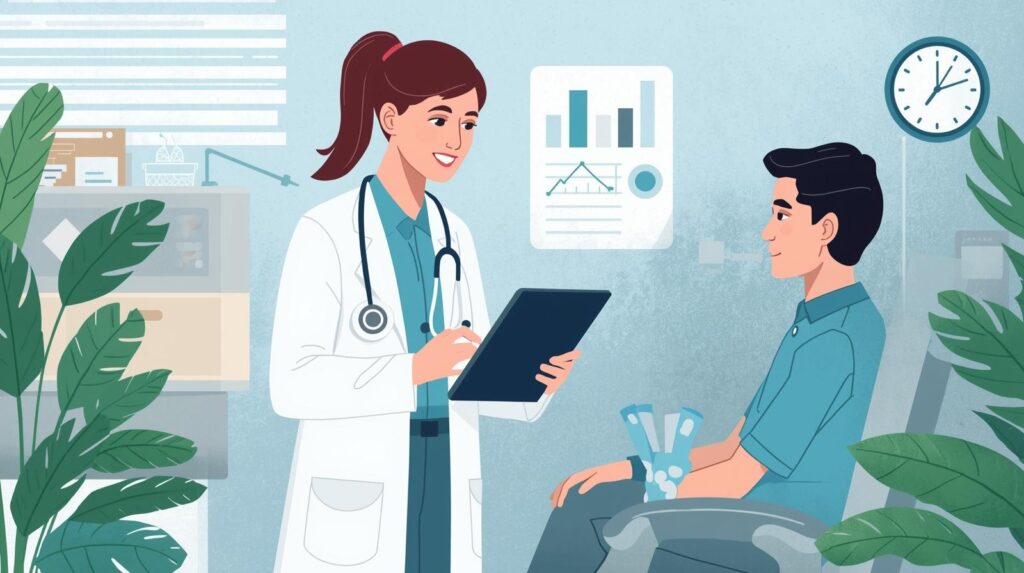The healthcare sector requires skilled doctors and surgeons to carry out operations and surgeries and aid in recovery from diseases, illnesses, and injuries. But there is one more important factor that can literally save lives: clear communication.
Australia is home to one of the most culturally diverse populations in the world. This is why hospitals and clinics face the constant challenge of providing quality care to patients who speak little or no English. A solution to this growing challenge is medical translation. Yes, this service allows everyone, regardless of their first language, to understand their diagnosis, treatment, and health information.
This blog walks you through what medical translation involves, why it’s important in Australian healthcare, and how professional services like Beyond Translation make all the difference in maintaining accuracy, compliance, and compassion in medical communication.
Why Medical Translation Matters in Australia
Australia’s healthcare system is built on the idea that everyone should have access to quality care. According to the Australian Bureau of Statistics (ABS) 2021 Census, 5.6 million people (22% of the population) in Australia reported using a language other than English at home. This shows there are many people who may need language support when visiting a doctor, hospital, or aged care facility.
When a patient can’t clearly communicate their symptoms or understand their treatment plan, it can lead to serious consequences, including misdiagnoses, medication errors, and emotional distress. With medical translation, important documents like patient records, consent forms, prescriptions, and discharge summaries are accurately translated into the patient’s preferred language.
But it’s not just about helping patients. Accurate translation also protects hospitals and healthcare professionals from legal and ethical risks. In a highly regulated environment like healthcare, even a small translation error can have major implications for compliance and patient safety.
Why Hospitals Should Use Professional Medical Translators

When dealing with something as critical as health information, there’s no room for guesswork. Relying on bilingual staff members, Google Translate, or general translators can lead to costly mistakes.
Here’s why hospitals should always work with professional medical translators:
1. Accuracy and Consistency
Medical terminology is one of the most complex areas of language. Words that sound similar can have completely different meanings in a clinical context. For example, translating “hypertension” or “lesion” incorrectly could drastically alter a diagnosis or treatment plan.
Professional medical translators are trained to handle this level of detail. They’re familiar with clinical vocabulary, terminology, abbreviations, and pharmacological terms. They also maintain consistency across all translated materials, whether it’s patient discharge notes, medication labels, or research documents.
2. Confidentiality and Compliance
Healthcare information is highly sensitive. Most Australian hospitals need to comply with the Privacy Act 1988, as well as the My Health Records Act 2012, which outlines strict rules on how personal health data is collected, stored, and shared.
When unqualified translators or informal interpreters are used, this confidentiality can be easily compromised, even unintentionally. Professional medical translators, however, follow stringent privacy and data security protocols. Reputable translation providers like Beyond Translation use secure systems for transferring and storing files, and their translators sign confidentiality agreements before working on any project.
3. Cultural Sensitivity
In Australia’s multicultural society, healthcare is not just about treating physical symptoms. It’s also about understanding the patient’s background, beliefs, and expectations. Cultural sensitivity plays a major role in how medical information is received and trusted.
A professional medical translator knows how to adapt language in a way that is both accurate and culturally respectful. For example, in some cultures, direct references to terminal illness or reproductive health can be considered taboo. A sensitive translator can find the right tone that maintains honesty while showing empathy and respect.
4. Certified Translators (NAATI Accreditation)
In Australia, the gold standard for translation quality is NAATI accreditation, a certification issued by the National Accreditation Authority for Translators and Interpreters. Hospitals and government agencies often require NAATI-certified translators to make sure that translated documents meet national quality and reliability benchmarks.
NAATI-certified translators are tested for language fluency, subject-matter knowledge, and professional ethics. This accreditation gives hospitals peace of mind that their documents will be accepted by medical boards, government departments, and insurance providers.
Types of Medical Documents That Need Translation
Hospitals and clinics often deal with a wide range of documents that require professional translation. Some of the most common include:
- Patient information forms and consent documents
- Clinical trial documentation
- Discharge summaries and medical reports
- Laboratory and diagnostic test results
- Prescription information and dosage guides
- Health promotion materials (brochures, posters, etc.)
- Insurance claims and billing records
- Patient education materials in community health programs
In multicultural cities like Melbourne, Sydney, and Brisbane, many hospitals now make translated materials readily available to improve patient satisfaction and engagement.
What Does the Translation Process Involve?
The medical translation process typically follows a structured approach to ensure precision and quality:
1. Document Assessment
The translation team reviews the document to identify its complexity, medical field (e.g., cardiology, oncology), and target audience.
2. Translation by a Medical Specialist
A qualified translator with experience in the relevant medical field translates the document.
3. Editing and Proofreading
A second linguist reviews the work for consistency, terminology accuracy, and formatting.
4. Quality Assurance
The final document goes through a quality check, often including compliance with hospital requirements or government regulations.
4. Delivery in Preferred Format
The translated document is delivered securely, whether it’s a printed file, PDF, or digital record ready for upload to hospital systems.
How Beyond Translation Supports Australia’s Healthcare System

For over a decade, Beyond Translation has been helping hospitals, clinics, and healthcare organisations across Australia communicate clearly with patients from diverse backgrounds. Based in Melbourne, Beyond Translation provides NAATI-certified medical translation services in over 150 languages.
What sets Beyond Translation apart is its commitment to quality and compliance. Every medical translation goes through a rigorous review process by linguists who specialise in healthcare terminology. The company also understands the urgency that hospitals often face, offering fast turnaround times without compromising accuracy.
Final Thoughts
Medical translation is an essential part of modern Australian healthcare, one that supports both patient outcomes and professional integrity. From ensuring legal compliance to building trust between doctors and patients, accurate translation saves time, prevents misunderstandings, and promotes better care for everyone.
So, if your hospital or clinic is ready to strengthen its communication and improve patient satisfaction,Beyond Translation is your reliable partner in breaking language barriers.
Visit now to learn more about our medical translation services.